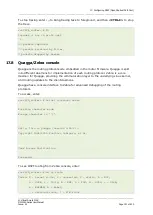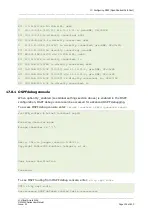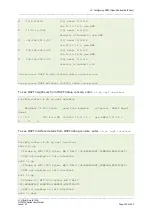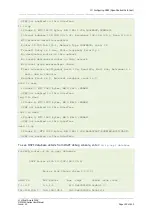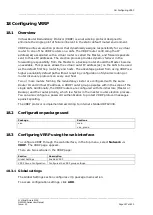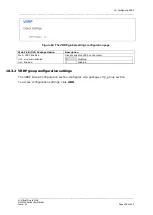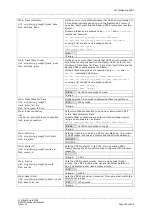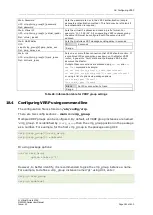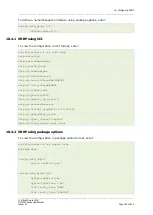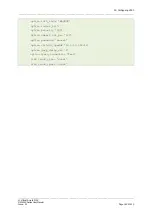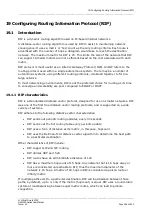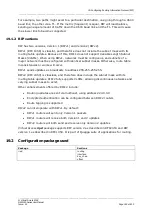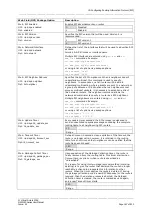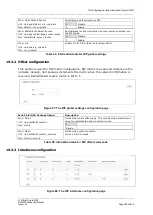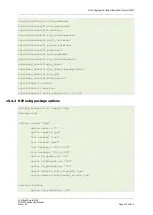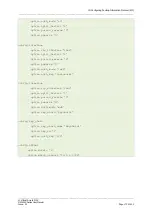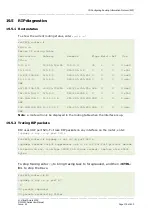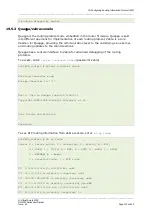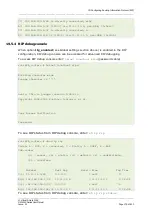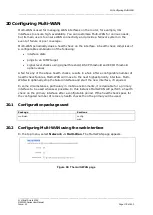
19: Configuring Routing Information Protocol (RIP)
_______________________________________________________________________________________________________
_______________________________________________________________________________________________________
© Virtual Access 2018
GW2020 Series User Manual
Issue: 2.1
Page 165 of 423
For example, two paths might exist to a particular destination, one going through a 9600
baud link, the other via a T1. If the metric (hopcount) is equal, RIP will load-balance,
sending an equal amount of traffic down the 9600 baud link and the T1. This will cause
the slower link to become congested.
19.1.2
RIP versions
RIP has two versions, Version 1 (RIPv1) and Version2 (RIPv2).
RIPv1 (RFC 1058) is classful, and therefore does not include the subnet mask with its
routing table updates. Because of this, RIPv1 does not support Variable Length Subnet
Masks (VLSMs). When using RIPv1, networks must be contiguous, and subnets of a
major network must be configured with identical subnet masks. Otherwise, route table
inconsistencies or worse will occur.
RIPv1 sends updates as broadcasts to address 255.255.255.255.
RIPv2 (RFC 2453) is classless, and therefore does include the subnet mask with its
routing table updates. RIPv2 fully supports VLSMs, allowing discontinuous networks and
varying subnet masks to exist.
Other enhancements offered by RIPv2 include:
•
Routing updates are sent via multicast, using address 224.0.0.9
•
Encrypted authentication can be configured between RIPv2 routers
•
Route tagging is supported
RIPv2 can interoperate with RIPv1. By default:
•
RIPv1 routers will sent only Version 1 packets
•
RIPv1 routers will receive both Version 1 and 2 updates
•
RIPv2 routers will both send and receive only Version 2 updates
Virtual Access ripd package supports RIP version 2 as described in RFC2453 and RIP
version 1 as described in RFC1058. It is part of Quagga suite of applications for routing.
19.2
Configuration package used
Package
Sections
ripd
routing
interface
key_chain
offset

